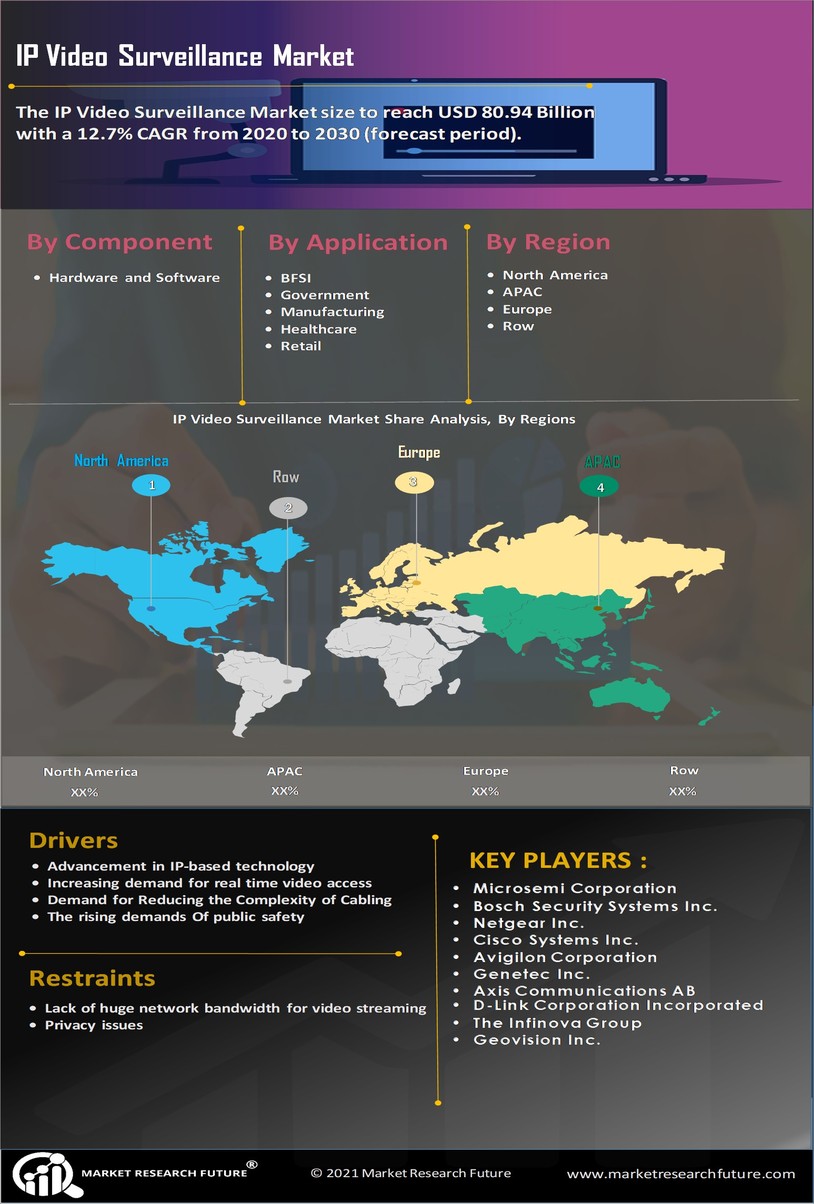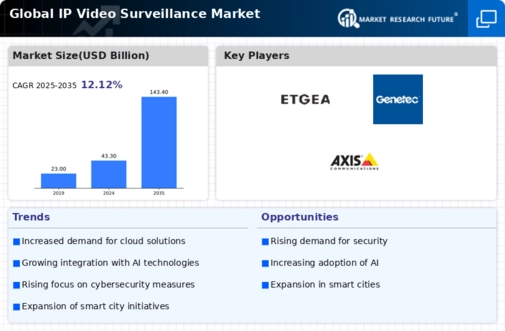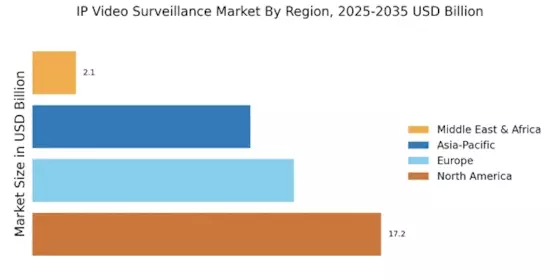The IP Video Surveillance Market is currently characterized by a dynamic competitive landscape, driven by technological advancements and increasing security concerns globally. Major players such as Hikvision (China), Dahua Technology (China), and Axis Communications (Sweden) are at the forefront, each adopting distinct strategies to enhance their market positioning. Hikvision (China) focuses on innovation through the development of AI-powered surveillance solutions, while Dahua Technology (China) emphasizes regional expansion, particularly in emerging markets. Axis Communications (Sweden) is known for its commitment to digital transformation, integrating IoT capabilities into its product offerings. Collectively, these strategies contribute to a competitive environment that is both innovative and responsive to market demands.
Key business tactics within the IP Video Surveillance Market include localizing manufacturing and optimizing supply chains to enhance operational efficiency. The market structure appears moderately fragmented, with several key players exerting influence over various segments. This fragmentation allows for a diverse range of products and services, catering to different customer needs and preferences. The collective influence of these major companies shapes the competitive dynamics, as they continuously adapt to technological advancements and changing consumer expectations.
In August 2025, Hikvision (China) announced the launch of its latest AI-driven video analytics platform, which aims to enhance real-time surveillance capabilities. This strategic move is significant as it positions Hikvision to leverage the growing demand for intelligent surveillance solutions, potentially increasing its market share in a highly competitive environment. The integration of AI technology not only improves operational efficiency but also addresses the evolving security challenges faced by businesses and public institutions.
In September 2025, Axis Communications (Sweden) entered into a strategic partnership with a leading cloud service provider to enhance its cloud-based surveillance solutions. This collaboration is pivotal as it aligns with the increasing trend towards cloud computing in the surveillance sector, allowing Axis to offer scalable and flexible solutions to its customers. By integrating cloud capabilities, Axis is likely to strengthen its competitive edge and attract a broader customer base seeking modern surveillance solutions.
In July 2025, Dahua Technology (China) expanded its manufacturing capabilities by establishing a new facility in Southeast Asia. This expansion is indicative of Dahua's strategy to localize production and reduce supply chain vulnerabilities. By enhancing its manufacturing footprint in a key growth region, Dahua is positioned to respond more effectively to regional demands and improve its service delivery, thereby solidifying its market presence.
As of October 2025, current competitive trends in the IP Video Surveillance Market are heavily influenced by digitalization, sustainability, and the integration of AI technologies. Strategic alliances are increasingly shaping the landscape, enabling companies to pool resources and expertise to innovate more rapidly. Looking ahead, competitive differentiation is likely to evolve from traditional price-based competition to a focus on innovation, advanced technology, and reliable supply chains. This shift underscores the importance of adaptability and forward-thinking strategies in maintaining a competitive advantage in the rapidly changing market.

















Leave a Comment